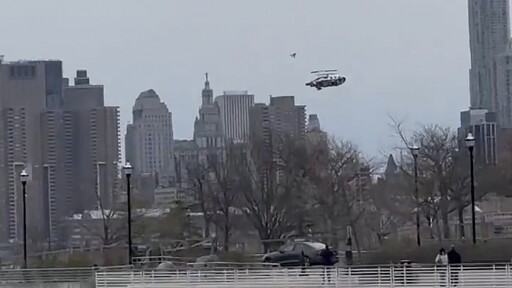The series of still photographs taken from surveillance camera video shows the fuselage, containing the engine and rotors, separating from the helicopter’s tail. The rotor blades and the transmission then detach from the cabin that’s carrying the passengers and the pilot.
The images were included in the preliminary report about the flight released by the National Transportation Safety Board.
“Several witnesses described hearing several loud ‘bangs’ emanating from the helicopter before it broke up and descended into the river,” the report says.
Justin Green, an aviation lawyer and former Marine helicopter pilot, said the sequence of images shows the helicopter yawing severely and the tail boom failing, suggesting it was most likely struck by the aircraft’s main rotor blades during flight.
This was an extremely high hour machine, 13,000 on the airframe and 26,000 on the engine. Not sure if that’s significant, but it’s definitely interesting.
Low for commercial. Moderate to high hours for general/private. The start of the catastrophe was the bolt holding the fuselage to the empennage (tail section) shearing off. Short sheeting maintenance seems to be the likely cause. Big no, no for reasons like this.
… the tail boom failing, suggesting it was most likely struck by the aircraft’s main rotor blades during flight.
I didn’t even know that was physically possible
That much rotational energy tends to keep rotating, even if that means ripping the entire seized gear box off the fuselage before taking out the tail boom!
That I could see. The way I read it, that wasn’t the order of operations and I thought that, for some reason, it could intentionally be pitched in such a way.
Normally the main rotor’s range of motion is intentionally limited such that this can’t happen, but through a combination of rapid changes in pitch and extreme control inputs, the main rotor can flex enough to contact the tail boom.
deleted by creator
Helicopters freak me the fuck out… At least in a fixed-wing plane, if the engines go out, you can glide. Helicopters just become fucking projectiles.
Depends on the airplane. My brother used to fly a stunt plane. It was designed such that he had to wear a parachute just to sit in it properly. If the engine quit, it had the glide characteristics of a rock…
Helicopters can glide too it’s just a little harder. When a helicopter loses power and needs to glide the first step is to aim it at the ground to pick up speed…
Step 2 is to pray you have the height to pull it off.
Psh loss of a tail rotor is easy, the helicopter basically becomes a plane. I have handled that exact scenario countless times in arma reforger :)
Helicopters can autorotate, meaning fly without power, and the Jetranger from my understanding has quite good autorotation characteristics.
If this was simply a power failure, they should have been able to land just fine.
Maybe the “Jesus Bolt” gave way?




